Table of Contents[Hide][Show]
- Radiohead’s In Rainbows Was The First Surprise Album In Music History
- Radiohead’s “Pay What You Want” Distribution Strategy For In Rainbows
- How Much Money Did Radiohead Make From In Rainbows?
- Maintaining The Diversity Of Individual Tracks While Creating A Cohesive Album For In Rainbows
- The Lesser Known Second Disk – In Rainbows Disk 2
- Fan Reactions & Industry Accolades
Yes, In Rainbows Is Radiohead’s Best Album+−
- The Top 25 Most Popular Radiohead Songs (According To Spotify)
- 10 Awesome 8-Bit Music Versions Of Popular Radiohead Songs
- An Open Letter to the Music Industry RE: Lossless Audio
- Fans Get To Pay Whatever They Want For New Radiohead In Rainbows Album
- Christina Aguilera Says She Likes Listening To Radiohead During Sex
Released in 2007, Radiohead‘s In Rainbows album shook up the music industry with its “pay what you want” approach to distribution and pricing. At the time, the distribution strategy was called innovative and groundbreaking. It was, but so was in the band’s sound and songwriting for the album. Here’s why In Rainbows is Radiohead’s best album of all time.
Radiohead's Best Album Is #InRainbows. Prove Me Wrong... #Radiohead #InRainbows #AlbumReview #MusicCritic #IndieRock #RockMusic #AlternativeRock #ThomYorke Share on XRadiohead’s In Rainbows Was The First Surprise Album In Music History
When Radiohead first released In Rainbows in 2007, there was little to no advance notice or promotion. The album just appeared one day on their website and everyone went wild. The shock sent ripples through the music industry as Radiohead captured the attention of millions of music fans without even spending a penny on promotion.
This was the first time in music history that a surprise album had been released like this. In the years that followed, other popular artists, like Beyonce, Nine Inch Nails, David Bowie, and U2 have also released surprise albums, but Radiohead is credited as being the first.
Radiohead bassist Colin Greenwood explained why the band choose this unconventional method for the album’s release. These reasons included the rising trend of using the Internet to discover music, frustration with traditional release and promotion methods, the ability to be independent from a record label, a desire to create something unique, and the goal of making their music available to listeners all over the world at the same time.
Radiohead’s “Pay What You Want” Distribution Strategy For In Rainbows
In addition to being the first band to release a surprise album, Radiohead is also recognized as the pioneer of the “pay-what-you-want” model of releasing music. In between record contracts, Radiohead had full control over their In Rainbows album and famously let fans pay whatever they wanted to download it directly from the band’s website.
This method of releasing an album, without the involvement of a record label and with no set price, was highly unusual and garnered significant attention and discussion in the industry. It also made people question the value of music in the digital age.
An innovative and pioneering step taken by @Radiohead was the self-release of their 2007 album #InRainbows online, allowing fans to 'pay what they like' for it. #Radiohead #RadioheadFans Share on XHow Much Money Did Radiohead Make From In Rainbows?
With the “pay what you want” model, Radiohead fans could just download In Rainbows for free. But they didn’t. According to reports, the band instantly made about $3 million dollars. And without a record label serving as a middleman, most of that money went right to Radiohead.
After the initial promotion, the album returned to a standard pay model. But strategically, the effort was a success. This unorthodox release strategy was widely discussed in the press and garnered significant attention for the band.
Basically, the band made money and got a ton of attention for a fantastic album, that fans, including those of us at MethodShop.com, are still talking about today.
Maintaining The Diversity Of Individual Tracks While Creating A Cohesive Album For In Rainbows
In Rainbows was not just groundbreaking in terms of distribution and pricing, but also its sound. The album was a departure from Radiohead’s previous work, and featured a stripped-down, acoustic sound and more intimate lyrics. In Rainbows also showcases their mastery in blending alternative rock with a diverse array of instruments, including strings, piano, and electronic elements. The band took risks and experimented with new sounds and styles, resulting in an album that was both experimental and accessible.
Each track stands out on its own, but Radiohead doesn’t just throw together a random assortment of tracks for their albums. Despite their tendency to break tradition when it comes to music distribution and marketing, the band maintains a reverence for the album format. They are known for crafting cohesive albums and put a great deal of effort into creating a unified musical experience, despite the diversity of individual tracks.
Taking A Closer Listen To In Rainbows Song By Song
As a whole, In Rainbows is an incredible collection of songs known for their experimental nature and diverse styles. Track by track, here’s what makes each song so special.
“15 Step”
Radiohead’s song “15 Step” is the opening track on In Rainbows and it sets the tone for the rest of the album. This song is characterized by its upbeat tempo, intricate drumbeat, and unique 5/4 timing.
At the 2009 Grammys, Radiohead performed “15 Step” live accompanied by the USC Trojan Marching Band, who played the complicated drumbeat flawlessly.
It’s a great introduction to the album, and a sign of the great music that’s to come.
“Bodysnatchers”
Compared to the other songs on In Rainbows, “Bodysnatchers” has an intense and driving rock sound, featuring a heavy guitar riff and aggressive drums. It’s fast-paced and one of the more uptempo tracks on the album. It’s also a fan favorite and often played by the band in concert.
Musically, “Bodysnatchers” showcases Radiohead’s ability to blend electronic elements with more traditional rock instrumentation, creating a unique and interesting sound. The song’s guitar riff is especially noteworthy. If you search for “Bodysnatchers” on YouTube, you’ll see multiple guitar tutorials teaching fans how to play the song themselves.
“Nude”
Radiohead first attempted to record “Nude” during the sessions for their 1997 album, OK Computer. Not satisfied with the outcome, the band kept the song as a work in progress. Over the next decade, Radiohead performed the song on several occasions, and it became one of their most well-known unreleased tracks.
For In Rainbows, the band reworked the song again, this time centering it around a bass line composed by Colin Greenwood. The new approach worked and ten years later “Nude” was finally included on a studio album.
Known for its delicate composition and Thom Yorke‘s emotive vocals, “Nude” is a beautifully crafted piece of music. The band creates a sense of tension and release through the use of dynamic instrumentation, with the song building to a climax before fading away.
The music video for “Nude” was directed by Garth Jennings and Adam Buxton and features the band performing in ultra-slow-motion while being surrounded by feathers. The quick filming and editing process, done on laptops and uploaded to YouTube, allowed for a more liberating and organic creation process for the band.
The single “Nude” reached number 21 on the UK Singles Chart. It also achieved significant success in the US, reaching number 37 on the Billboard Hot 100, making it Radiohead’s second highest charting single after “Creep” hit number 34 in 1993. It was also the first Radiohead song to appear on the Billboard Pop 100.
“Weird Fishes/Arpeggi”
“Weird Fishes / Arpeggi” is a technically complex, yet beautiful song. It’s notable for its musical structure, which features a repeating arpeggiated guitar riff and layered arrangement, that come together to create a rich and dynamic sound.
The song has been interpreted in a variety of ways, and the meaning of the lyrics is not entirely clear. Some have suggested that the lyrics are about the difficulty of connecting with others or the struggle to maintain relationships. Others have interpreted the lyrics as a commentary on the state of the world or the human condition.
The lyrics use various underwater imagery, such as fish, worms, and waves, which could symbolize the feeling of being trapped or lost. The use of arpeggi in the title could be pointing that the repetitive, cyclical nature of the relationships depicted in the song.
The band’s front man, Thom Yorke, has stated in an interview that the song was inspired by a dream he had, where he was swimming in a river and being pulled along by the current. He said that the song is about “trying to hold on to something, but it’s slipping away.”
“All I Need”
With its atmospheric and emotional sound, “All I Need” is one of those songs that stays with you. It’s hauntingly beautiful.
Thom Yorke wrote the lyrics following the breakdown of a relationship. It details his feelings of isolation and despair from the experience. The song contains multiple references of neglect like the lines, “I’m an animal trapped in your hot car” and “I am all the days that you choose to ignore.”
I’m the next act
Waiting in the wings
I’m an animal
Trapped in your hot car
I am all the days
That you choose to ignoreYou are all I need
You’re all I need
I’m in the middle of your picture
Lying in the reedsI am a moth
Who just wants to share your light
I’m just an insect
Trying to get out of the night
I only stick with you
‘Cause there are no othersYou are all I need
You’re all I need
I’m in the middle of your picture
Lying in the reedsIt’s all wrong, it’s all wrong, it’s all wrong
It’s all right, it’s all right, it’s all right
It’s all wrong, it’s all right
It’s all right, it’s all right
“Faust Arp”
This short two-minute song has an interesting title that users on Reddit have debated in detail. Relying on their collective wisdom, here’s what Redditors think the song is about and what the title means.
What’s the meaning of the song “Faust Arp” by Radiohead?
- “Faust” is a reference to the German poet Johann Wolfgang von Goethe‘s 1831 play “Faust“, which tells the story of a man who makes a deal with the devil. Today, Germans use the term “Faust” to describe anyone who is successful but has “sold their soul” to the devil and lack moral integrity.
- “Arp” is just short for arpeggiating, the finger-picking style of guitar playing throughout the song.
“Reckoner”
One of the most notable tracks on In Rainbows is “Reckoner,” which combines a simple, repetitive guitar line with soft layered percussion. The song’s haunting beauty explores themes of loss and redemption. The song showcases Radiohead’s ability to show emotional depth and push musical boundaries.
“House of Cards”
Although “Hose Of Cards” is musically one of the best songs on In Rainbows, it’s widely known for its unique music video. Produced using then state-of-the-art 3D scanning technology, it was one of the most technically advanced music videos of its era.
Lyrically, the song deals with themes of loss and grief, with Thom Yorke‘s vocals conveying a sense of longing and sadness. Set against its unique electronic sound and a repeating guitar melody, the song has a distinctive and memorable sonic landscape.
“Jigsaw Falling Into Place”
The lyrics of “Jigsaw Falling Into Place” detail a wild night of drinking and the feeling of disorientation and confusion. Then trying to hold on to moment before it slips away and gets “lost between the notes.”
In an interview with The Telegraph, Adam Buxton, the co-directer of the music video for “Jigsaw Falling Into Place”, confirmed that the song was about “being out on the town on a lairy Saturday night”.
NERD NOTE: “Lairy” is English slang for rowdy.
The music video was famously shot with just two takes using helmet cameras on each band member. It’s just another example of Radiohead’s willingness to experiment with their art.
In 2007, Time magazine recognized “Jigsaw Falling into Place” as the fifth best song of the year. Time reporter, Josh Tyrangiel, praised the song for its “tightness” and how it conveys the intensity of encounter through its rising tempo, likening it to a three-act play. He also noted the song’s ability to succinctly capture the emotions and experiences of a doomed relationship in just four minutes.
“Videotape”
The closing track on any album usually has some special meaning to the band. And Radiohead choosing to end In Rainbows with “Videotape” is very fitting.
Through powerful, emotive language, the song conveys the final thoughts of a man as he records his farewells on a piece of technology that is already obsolete. The poignancy of the moment is not just in the man’s impending death, but in his choice to pass away alone and only communicate his final thoughts to others after he’s gone.
Through the lines “This is my way of saying goodbye” and “Because I can’t do it face to face” set to a somber piano melody, he expresses his reluctance to confront his feelings head on.
“Videotape” is a very depressing song, but it does end with some elements of optimism. The closing lyrics are, “No matter what happens now, you shouldn’t be afraid, because I know today has been the most perfect day I’ve ever seen.”
The piano and bass then build to an impending climax, but never fully resolve, leaving the listener with a sense of lingering uncertainty.
Musically, the song uses a technique called “syncopation” where the weaker beats are accented. In “Videotape”, Radiohead takes a normal 4/4 piano beat and adds waves of unique accents making an otherwise simple piano progression remarkably complex and interesting.
The Lesser Known Second Disk – In Rainbows Disk 2

Even loyal Radiohead fans may be surprised to discover that In Rainbows is a two-disc album. The lesser known second disk wasn’t widely promoted and doesn’t contain any commercially popular songs.
Included the special edition version of In Rainbows, the second disk, In Rainbows Disk 2, contains eight tracks that feel more like a collection of session leftovers than a standard two-disc album. While die-hard Radiohead fans will get a lot of enjoyment from In Rainbows Disk 2, the average person likely won’t.
- “MK 1” – 1:03
- “Down Is the New Up” – 4:59
- “Go Slowly” – 3:48
- “MK 2” – 0:53
- “Last Flowers” – 4:26
- “Up on the Ladder” – 4:17
- “Bangers + Mash” – 3:19
- “4 Minute Warning” – 4:04
Fan Reactions & Industry Accolades
Fans praised In Rainbows after its release, and the album continues to connect with new audiences many years later. A quick look at the top 15 Radiohead songs in Apple‘s iTunes Store (Jan 2023) clearly show how popular the album still is to this day. One-third of the top tracks are from In Rainbows.
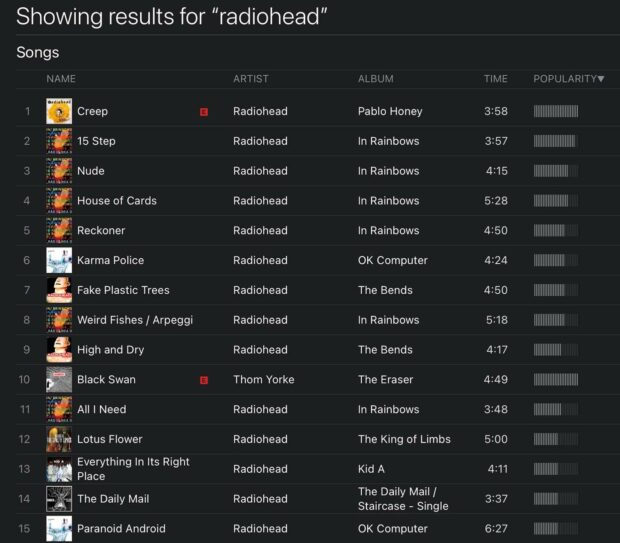
It’s not just fans, critics also love In Rainbows. The 2007 album received recognition in the form of numerous nominations and awards, such as being shortlisted for the 2008 Mercury Prize. It went on to win the Grammy award for Best Alternative Music Album, and also for Best Boxed or Special Limited Edition Package at the 51st Annual Grammy Awards. Additionally, it was nominated for Album of the Year and Producer of the Year, Non-Classical (for producer Nigel Godrich), and “House of Cards” was nominated for Best Rock Performance by a Duo or Group with Vocal, Best Rock Song, and Best Music Video.
According to the 2011 edition of The Rolling Stone Album Guide, In Rainbows is considered to be Radiohead’s “most expansive and seductive album, possibly their all-time high.”
Yes, In Rainbows Is Radiohead’s Best Album
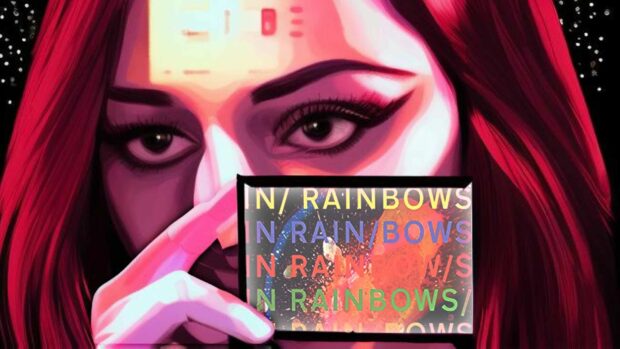
What is Radiohead’s best album? Without hesitation, I will stand by the opinion that In Rainbows is Radiohead’s best album.
After the explosive success of the song “Creep” from Radiohead’s first album, Pablo Honey (1993), they probably should have imploded. Not many bands can withstand the combination of intense instant fame and success. But the band’s second album, The Bends (1995), was also successful and full of multiple hits including “Fake Plastic Trees”, which was even included on the soundtrack for the 1995 Alicia Silverstone film, Clueless. Radiohead navigated the often dreaded sophomore slump with ease.
Then, in 1997, with the release of their third album, OK Computer, Radiohead officially made a transformation from being known as “that band that did Creep,” to a symbol of exceptional music. OK Computer solidified Radiohead’s status as true musical geniuses with a mass following.
With each album, the band continues to innovate their sound. But the progression from Pablo Honey to their seventh album, In Rainbows, was incredibly exciting. In Rainbows is Radiohead’s most cumulative work, expertly incorporating elements from their entire discography to create a cohesive and satisfying listening journey for both long-time fans and newcomers.
In Rainbows stands out as the band’s most musically cohesive album, seamlessly blending together their signature alternative rock sound with an array of diverse elements such as strings, piano, and experimental electronic elements to create a truly dynamic listening experience.
Overall, In Rainbows is a testament to Radiohead’s artistic vision and willingness to challenge the status quo. It remains a significant and influential release in both the band’s discography and in the history of music.
Radiohead’s best album is In Rainbows. Prove me wrong in the comments. Thanks for reading.
Radiohead's best album is #InRainbows. Prove me wrong. #Radiohead #RadioheadFans #AlbumReview #MusicCritic #IndieRock #RockMusic #AlternativeRock Share on X
Frank Wilson is a retired teacher with over 30 years of combined experience in the education, small business technology, and real estate business. He now blogs as a hobby and spends most days tinkering with old computers. Wilson is passionate about tech, enjoys fishing, and loves drinking beer.

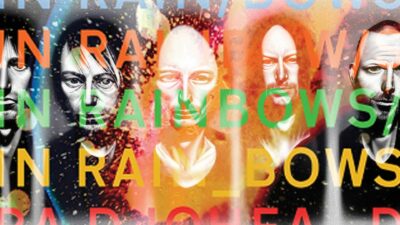


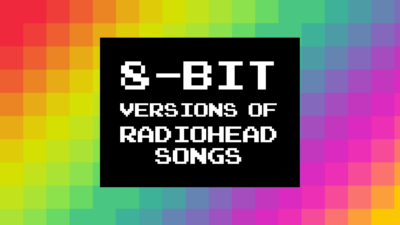
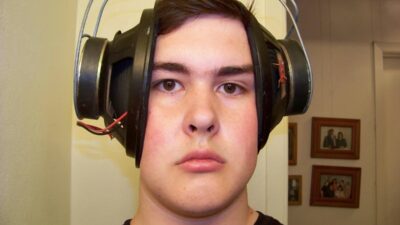

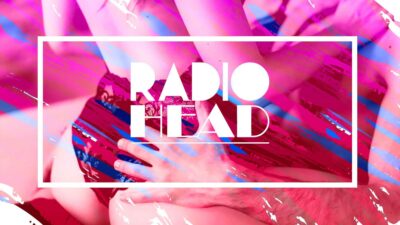









 Lisa Marie Presley, Daughter Of Elvis, Dies At 54
Lisa Marie Presley, Daughter Of Elvis, Dies At 54
Leave a Reply
You must be logged in to post a comment.